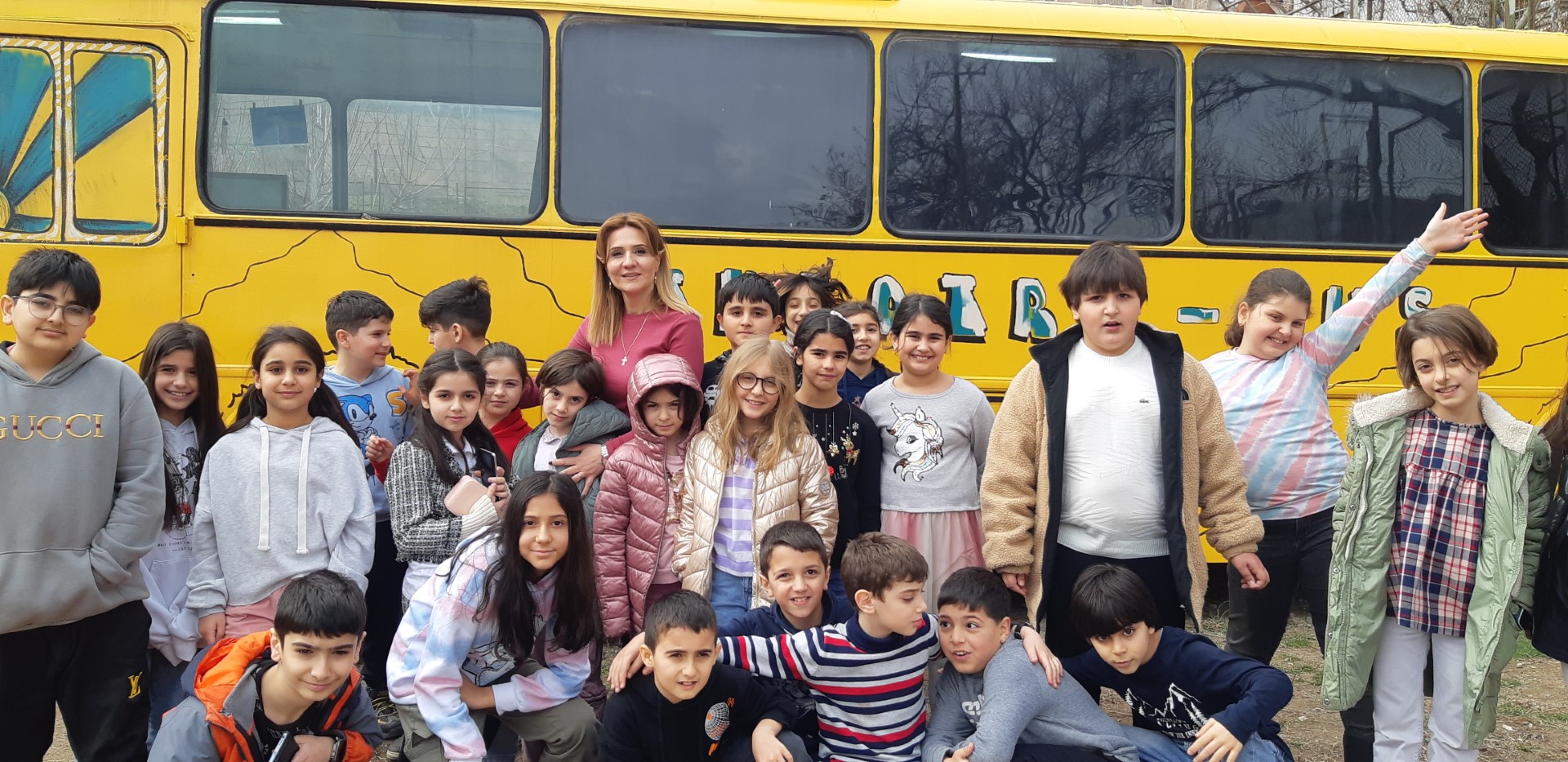We cannot say that we are the author of the shadow theater. It has a very old history. The Theater of Shadows has been accepted by UNESCO as a Syrian intangible cultural heritage. It also has a long history in Southeast Asia, particularly in Indonesia, Malaysia, Thailand, and Cambodia. It has been an ancient art and a living folk tradition in China, India, Iran and Nepal. It is also known in Egypt, Turkey, Greece, Germany, France and the USA.
And what is ours in this initiative? The Foreign Language Theater of Shadows is ours, first of all, with an old bus converted into a theater. A vivid creative imagination was needed to see a theater of shadows with its audience and stage in that scrap of metal. The second component of our author approach was that this future theater could be a theater of shadows in foreign languages and teaching foreign languages.
People are able to formulate their thoughts correctly and clearly when they talk about a phenomenon that is familiar to them. In other words, they are familiar with the content, and the form is the language that comes after the content. In general, people, especially children, speak much more freely and boldly when they know the content of what they have to say. I know from my experience that children tell a story in English much better if the content of that story is known to them in Armenian, for example, they are able to tell the well-known Armenian fairy tales in English much easier than another story they do not know. I think that when learning a foreign language, it is not necessary to overload children with unfamiliar content and an unfamiliar form at the same time. Fairy tales, well known to children, are contents that we have to give form to, the language, which we do by playing, laughing, singing and dancing.
As the founder of our EduComplex Ashot Bleyan says, our pedagogical environment promoted and created our author theater of shadows in the Theater-bus. Foreign language shadow theater has become an effective educational tool that helps our students to present different fairy tales in a foreign language to their younger friends. In this way, teaching-learning process becomes more interesting, motivating, which allows our students to create, think, express themselves, and self-evaluate.
How is a new shadow performance created?
Fairy tale selection
When choosing a fairy tale in a junior school, much attention is paid to the text. It should be written in an accessible and simple language. It is much better if the students have already read the fairy tale in their native language, that is, the given fairy tale is already very familiar and loved by them. While reading a well-known Armenian fairy tale in a foreign language, the learners try to guess the meanings of the unfamiliar words they come across. Thus, the learners understand the fairy tale in a foreign language faster and easier. For example, while performing fairy tale “The Liar” by Hovhannes Tumanyan, the students came across the word “Cane” and, remembering the Armenian fairy tale, they immediately guessed the meaning saying “daganak” in Armenian as it is in Tumanyan’s Armenian text.
Role distribution process or casting
After choosing a fairy tale, students begin to get to know the fairy tale, learning all the words and phrases. After learning the story very well, they try to read it in roles. During this time, they understand which role is close to their heart and which role they would like to play. Here the teacher just helps the learner to choose the right role. When the learner already knows his/her role, he/she begins to enter into his/her assumed role, expressing interesting emotions, using various improvisations, in other words, the learners create their roles.
Making shadow puppets
Shadow puppets are made with a special mechanism. At the January camp, our students had a master class with Nver Gharabekyan, who showed how to make shadow puppets.
The master class helped a lot so that later, in collaboration with the technology teacher, the students could create the shadow puppets themselves. First, they draw the given hero with a black pencil on A4 size paper, after that they cut it, take it out and put it on a thick black cardboard, cut out the ready-made doll-hero, and then fasten the rod with the help of the technology teacher.
The choice of music
Here, we either cooperate with the music teacher, or the students choose the music themselves. It is desirable that the performance begin and end with music.
The miracle begins created by our knowledge of the foreign language, our voice, and our hands: that’s the puppet show of shadows in the theater-bus.
The performance benefits much more if an interactive play-performance is organized, that is, an interactive training with the audience, and after the performance, a discussion of the fairy tale takes place.

